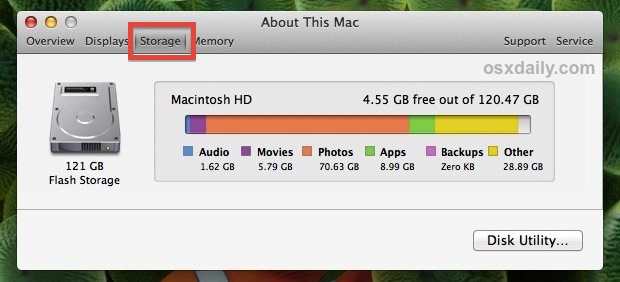Streamlining Security with Automated Secrets Management

In today’s fast-paced digital landscape, safeguarding sensitive information is paramount. Automated secrets management has emerged as a critical solution for organizations aiming to secure credentials, API keys, and other sensitive data efficiently.
By automating the generation, rotation, and storage of secrets, businesses can reduce human error, enhance security, and streamline operations. This blog explores the importance of automated secrets management, its benefits, and practical steps to implement it effectively.
What is Automated Secrets Management?
Secrets management involves handling sensitive data like passwords, encryption keys, and API tokens securely. Manual processes, such as storing credentials in spreadsheets or hardcoding them in applications, are prone to errors and vulnerabilities.
Automated secrets management uses specialized tools to create, store, rotate, and revoke secrets systematically, ensuring they remain secure and accessible only to authorized entities.
These tools integrate with existing systems, such as cloud platforms, CI/CD pipelines, and DevOps workflows, to provide seamless security. Popular solutions include HashiCorp Vault, AWS Secrets Manager, and Azure Key Vault, each offering robust features to automate the lifecycle of secrets.
Why Automated Secrets Management Matters
1. Enhanced Security
Manual secrets management often leads to predictable passwords or exposed credentials in source code. Automated systems generate strong, unique secrets and rotate them regularly, reducing the risk of unauthorized access. For instance, rotating API keys every 30 days minimizes the window of opportunity for attackers.
2. Reduced Human Error
Humans are fallible. Developers might accidentally commit sensitive data to public repositories, or admins might forget to update passwords. Automation eliminates these risks by enforcing consistent policies and removing manual intervention.
3. Scalability
As organizations grow, managing hundreds or thousands of secrets becomes unwieldy. Automated secrets management scales effortlessly, handling secrets across multiple environments—cloud, on-premises, or hybrid—without additional overhead.
4. Compliance and Auditing
Regulatory frameworks like GDPR, HIPAA, and SOC 2 require strict control over sensitive data. Automated tools provide detailed logs and audit trails, making it easier to demonstrate compliance during audits.
5. Developer Productivity
By integrating with DevOps tools, automated secrets management allows developers to focus on coding rather than managing credentials. Secrets are injected securely into applications at runtime, streamlining workflows.
Key Features of Automated Secrets Management Tools
When choosing a secrets management solution, look for these essential features:
- Centralized Storage: A secure vault to store all secrets, accessible via role-based access control (RBAC).
- Dynamic Secrets: Generate temporary credentials that expire after use, reducing exposure.
- Automated Rotation: Schedule regular updates to passwords and keys without manual intervention.
- Encryption: Protect secrets at rest and in transit using strong encryption standards.
- Integration: Support for cloud platforms (AWS, Azure, GCP), Kubernetes, and CI/CD pipelines.
- Audit Logging: Track who accessed what and when for accountability.
Implementing Automated Secrets Management
Here’s a step-by-step guide to adopting automated secrets management in your organization:
Step 1: Assess Your Needs
Identify all secrets in your environment—database credentials, API keys, SSH keys, and more. Determine which applications and teams need access and how frequently secrets should be rotated.
Step 2: Choose the Right Tool
Select a tool that aligns with your tech stack. For example, AWS Secrets Manager is ideal for AWS-centric environments, while HashiCorp Vault suits hybrid or multi-cloud setups. Evaluate based on ease of integration, scalability, and cost.
Step 3: Set Up Centralized Storage
Deploy the secrets management tool and configure a centralized vault. Ensure it’s encrypted and accessible only via secure protocols. Define RBAC policies to limit access to authorized users and applications.
Step 4: Automate Secrets Lifecycle
Configure policies for generating and rotating secrets. For instance, set API keys to rotate every 90 days and database credentials every 30 days. Use dynamic secrets for temporary access, such as for one-time database queries.
Step 5: Integrate with Workflows
Integrate the tool with your CI/CD pipelines, container orchestration platforms (e.g., Kubernetes), and cloud services. This ensures secrets are injected securely into applications without hardcoding.
Step 6: Monitor and Audit
Enable logging to track secret usage. Regularly review audit logs to detect anomalies, such as unauthorized access attempts. Use these insights to refine policies and improve security.
Challenges and Considerations
While automated secrets management offers numerous benefits, it’s not without challenges. Initial setup can be complex, especially in legacy systems with hardcoded credentials. To address this, prioritize migrating critical applications first and gradually phase out manual processes. Additionally, ensure your team is trained to use the chosen tool effectively to avoid misconfigurations.
Cost is another consideration. Some tools, like cloud-native solutions, may incur usage-based fees. Weigh the costs against the security and efficiency gains to make an informed decision.
Real-World Example
Consider a fintech company managing thousands of API keys for payment processing. Previously, developers stored keys in configuration files, leading to occasional leaks.
After adopting an automated secrets management tool, the company centralized key storage, enabled dynamic secrets for temporary access, and automated rotation every 15 days. The result? A 70% reduction in security incidents and faster compliance audits.
Getting Started Today
Automated secrets management is no longer optional—it’s a necessity for modern organizations. Start small by piloting a tool in a single project, then scale across your infrastructure. By prioritizing security and automation, you’ll protect sensitive data, boost efficiency, and stay ahead of cyber threats.
For more information, explore tools like HashiCorp Vault or AWS Secrets Manager, and consult their documentation for setup guides tailored to your environment. Secure your secrets, streamline your workflows, and build a more resilient organization.





